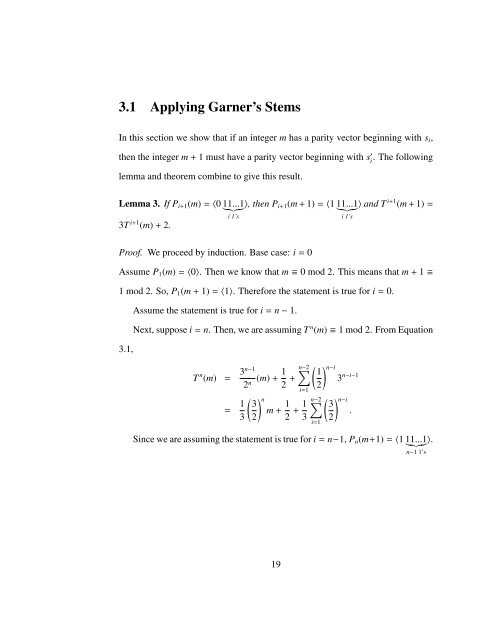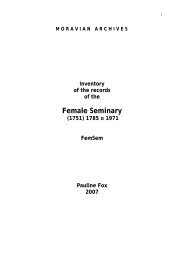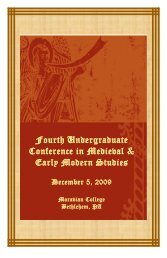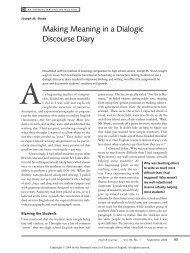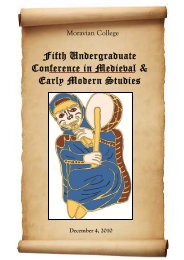Explorations of the Collatz Conjecture - Moravian College
Explorations of the Collatz Conjecture - Moravian College
Explorations of the Collatz Conjecture - Moravian College
You also want an ePaper? Increase the reach of your titles
YUMPU automatically turns print PDFs into web optimized ePapers that Google loves.
3.1 Applying Garner’s Stems<br />
In this section we show that if an integer m has a parity vector beginning with s i ,<br />
<strong>the</strong>n <strong>the</strong> integer m + 1 must have a parity vector beginning with s ′ i<br />
. The following<br />
lemma and <strong>the</strong>orem combine to give this result.<br />
Lemma 3. If P i+1 (m) = 〈0 11...1〉, <strong>the</strong>n P i+1 (m + 1) = 〈1 11...1〉 and T i+1 (m + 1) =<br />
3T i+1 (m) + 2.<br />
}{{}<br />
i 1’s<br />
}{{}<br />
i 1’s<br />
Pro<strong>of</strong>. We proceed by induction. Base case: i = 0<br />
Assume P 1 (m) = 〈0〉. Then we know that m ≡ 0 mod 2. This means that m + 1 ≡<br />
1 mod 2. So, P 1 (m + 1) = 〈1〉. Therefore <strong>the</strong> statement is true for i = 0.<br />
3.1,<br />
Assume <strong>the</strong> statement is true for i = n − 1.<br />
Next, suppose i = n. Then, we are assuming T n (m) ≡ 1 mod 2. From Equation<br />
T n (m) = 3n−1<br />
2 (m) + 1 ∑n−2<br />
( ) n−i 1 n 2 + 3 n−i−1<br />
2<br />
i=1<br />
= 1 ( ) n 3<br />
m + 1 3 2 2 + 1 ∑n−2<br />
( ) n−i 3<br />
.<br />
3 2<br />
Since we are assuming <strong>the</strong> statement is true for i = n−1, P n (m+1) = 〈1 11...1〉.<br />
i=1<br />
}{{}<br />
n−1 1’s<br />
19


